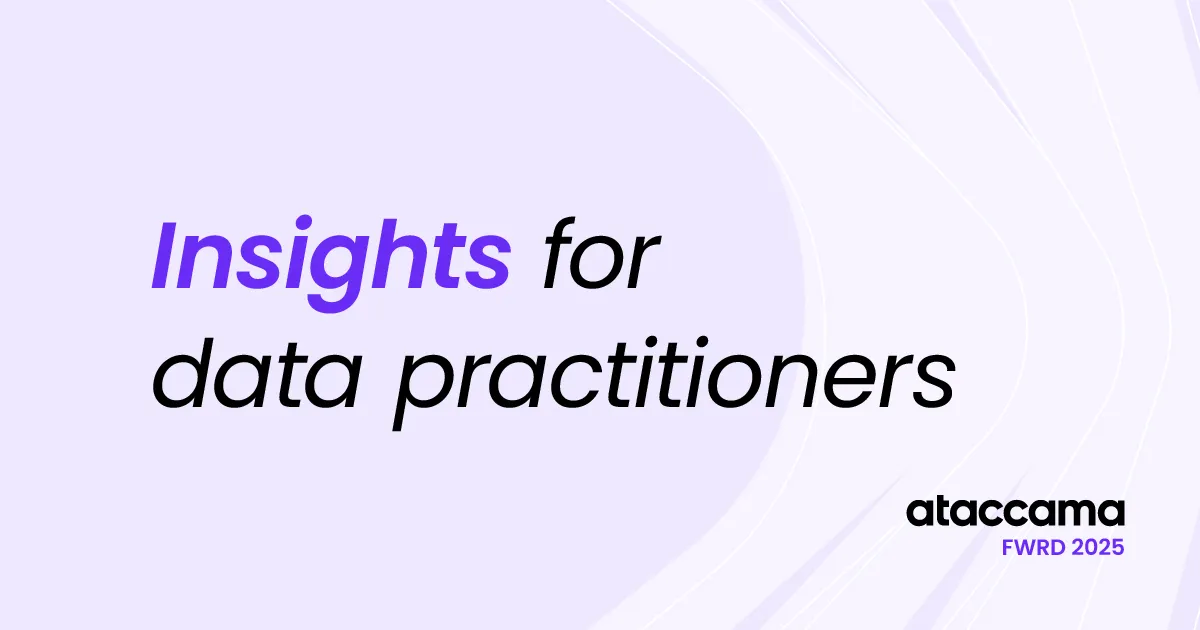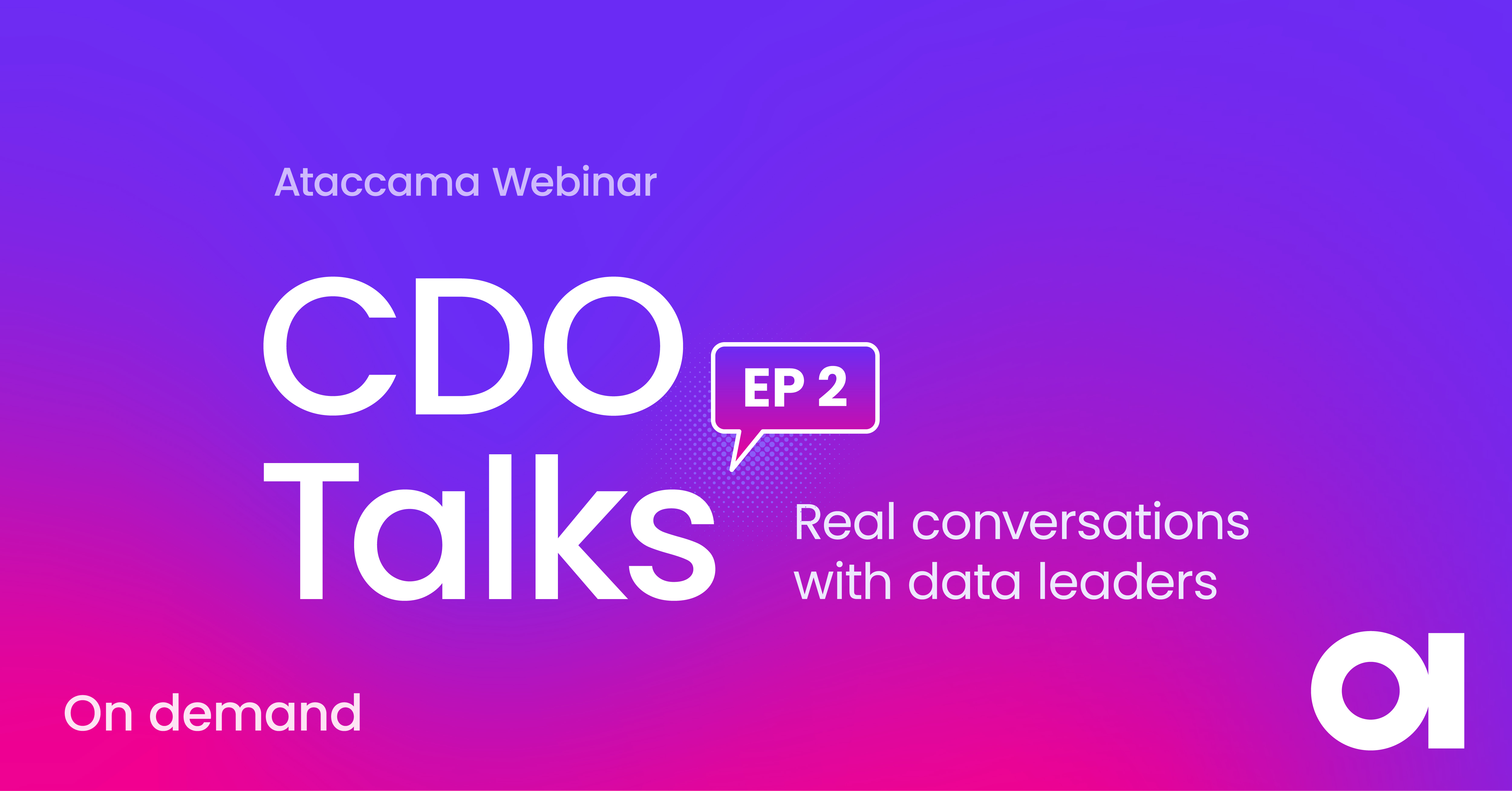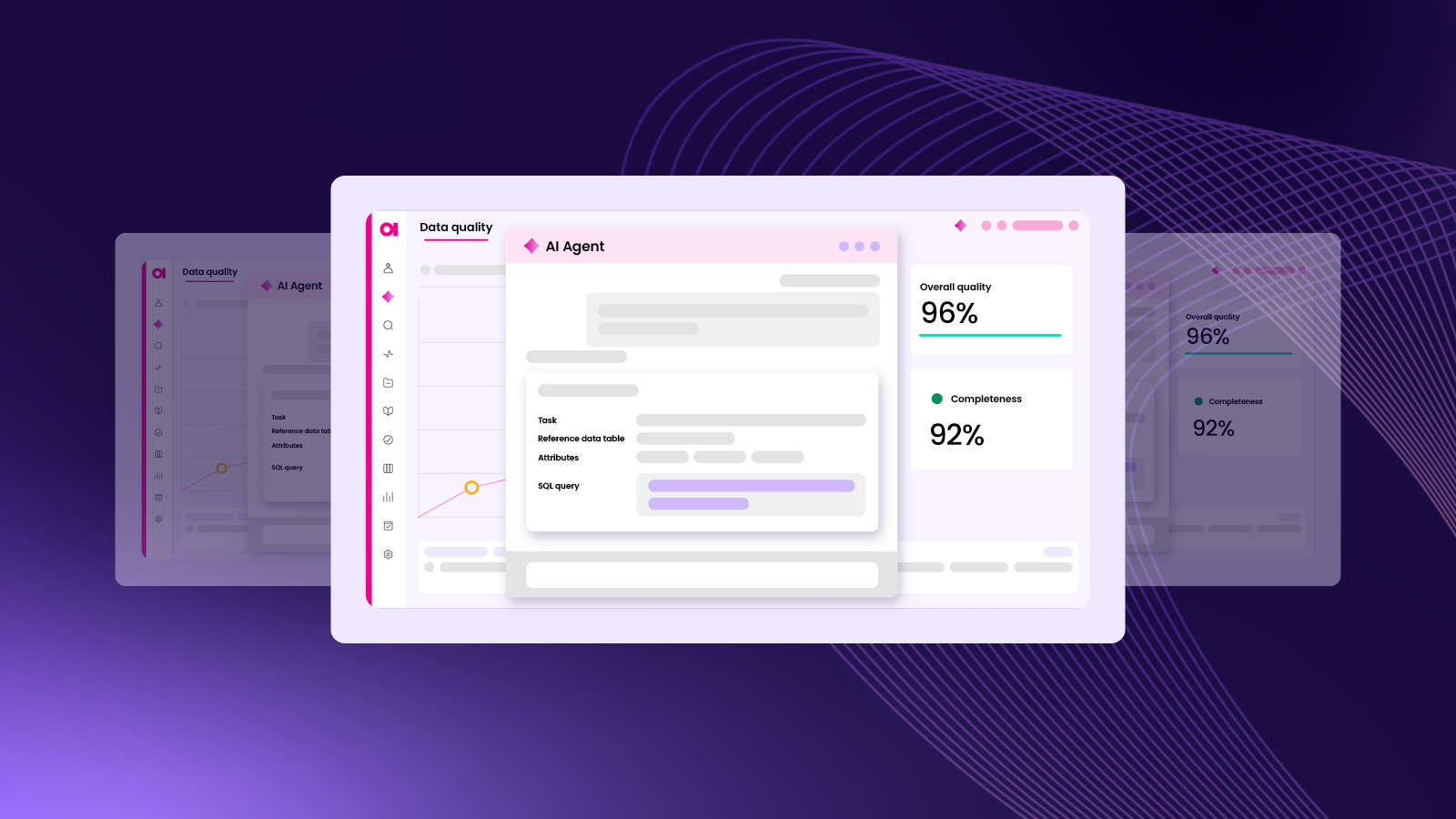Data quality powers data trust, and trusted data powers AI you can rely on

A global bank launches a cutting-edge AI personalization program, only to watch it fail because of duplicate and incomplete customer data. This isn’t a far-fetched nightmare; it’s a real scenario that shows how fragile trust in data has become.
68% of Chief Data Officers (CDOs) rank poor data quality as their top concern. Over half of enterprise data leaders (51%) say improving accuracy is their number-one priority this year. They have good reason: without accurate, complete, and timely data, trust in analytics erodes, compliance risks spike, and AI projects stall before they deliver value.
Yet amidst these risks, the opportunity is equally clear. Treat data quality as a strategic priority, and you create a foundation for better decisions, reduced risk, and reliable AI. Data quality powers data trust, and trusted data powers everything else.
Governance is not enough; quality is the key to trust
Enterprises have poured resources into data governance — defining policies, assigning owners, and implementing catalogs and controls. But when the data behind them is inconsistent or missing, trust evaporates. What makes governance work is quality. It’s the difference between reports that regulators believe and dashboards that executives can act on.
Governance defines the rules, but only strong data quality makes those rules matter. With quality, glossary definitions match reality, lineage is traceable, and policies are upheld by clean, consistent data in practice.
The reverse is also true: neglect quality and even the best governance framework won’t prevent bad outcomes. Compliance checklists and stewardship roles won’t save you from a report built on faulty numbers. Poor data will always find a way to undermine decisions.
Compliance breakdowns often trace back to simple data errors — an incorrect value in a report, an outdated record in a database — that slip through because no one fixed the data itself. This is why CDOs increasingly view data quality not as a technical detail but as a strategic mandate. Improving data quality is essential to restoring trust in data.
The high cost of low-quality data
Bad data chips away at trust and becomes a direct business risk. Most costs stay hidden until they erupt into something bigger. An AI model built on shaky inputs can still generate charts and forecasts that look convincing, but the numbers don’t hold.
A single mistyped entry may look minor, but by the time it reaches a financial report, it can trigger an audit, a fine, or worse. Operationally, teams waste hours reconciling conflicting reports and chasing down issues. Productivity suffers.
Data debt adds up quickly. What begins as a small problem can escalate into a costly compliance failure or a stalled project. Addressing quality early turns risk into an advantage. The organizations that move now will reap the benefits, while those that wait will keep paying the price.
What does a real solution look like?
So how can organizations build data trust and ensure their data is ready for prime time? The companies that succeed take a more integrated approach. They build data trust through a framework that spans people, process, and technology to create structure, visibility, and accountability at scale. Here’s what that looks like in practice:
Organize: Agree on rules, catalog assets, and set the foundations
Getting to trusted data starts with alignment. Business and data teams define what counts as complete, accurate, or usable, and who is responsible when it falls short. From there, the catalog becomes more than an inventory. It shows where data originates, how it moves, and whether it meets the standards set. In practice, this is governance at work: not abstract policy, but a framework people can rely on day to day.
Understand: Monitor flows, validate quality, and catch issues early
Detecting problems isn’t enough; they have to be resolved where they start. Leading teams push quality checks into the pipeline so errors are corrected before they move downstream. That approach keeps flawed data out of dashboards and models, lowers operational risk, and makes quality part of daily work rather than a one-off cleanup exercise.
Improve: Resolve issues in the pipeline and embed trust into daily work
Not every data problem can be prevented upstream. In practice, most fixes happen in the warehouse or pipeline, where teams can standardize formats, merge duplicates, and apply business rules before the data is used. The strongest programs also feed those learnings back, so recurring issues get addressed earlier and trust keeps building over time.
The payoff is trusted data, better business
Investing in data quality is not just defensive; it’s a strategy to win. When data leaders make quality a priority, the payoff comes in two forms: risk reduction and value creation.
On the risk side, trusted data dramatically lowers the odds of costly mistakes. If your data is clean, consistent, and governed, you’re far less likely to suffer a compliance violation or public setback. Issues get flagged internally long before they escalate. Instead of firefighting data problems, teams can spend time on innovation.
On the value side, high data trust enables AI and analytics to deliver. Organizations that focus on quality see tangible performance gains. Reliable data streamlines processes and allows confident automation, leading to faster operations and cost savings. Companies with trusted data can fully leverage AI in customer experiences, supply chain optimization, and risk modeling — areas that drive real competitive advantage.
Trusted data makes AI reliable, and that reliability is what makes it useful in business.
Start small, score quick wins, and scale trust
Improving data quality can feel daunting. Large enterprises often have tens of thousands of datasets and years of legacy buildup. The key is to start small and focus on a high-value domain where improvements will deliver obvious business results.
Pick one critical area — customer data in your CRM or finance data for regulatory reporting — and fix what matters most. Clean up duplicates, reconcile definitions, and set up monitoring in that domain. Tie the work to a business outcome: more accurate revenue reporting, faster quarter-end close, or higher campaign response rates.
These early wins resonate with executives and build momentum. From there, you can rinse and repeat, expanding to the next domain, armed with lessons from your pilot. Think big, start small, scale steadily.
We’ve put together the Data Trust Playbook as a practical guide that’s not theory, but real steps to embed quality into governance and build trust at scale. It lays out how to set foundations, monitor progress, and make trust part of everyday operations.
Getting started doesn’t mean tackling everything at once. Focus first on a high-impact area, prove the value, and then expand. Over time, quality becomes the norm, not the exception. That’s what makes AI dependable, compliance smoother, and decisions faster.
Ready to get started?
Download the Data Trust Playbook for actionable guidance and lead your organization into the trust-powered future.







